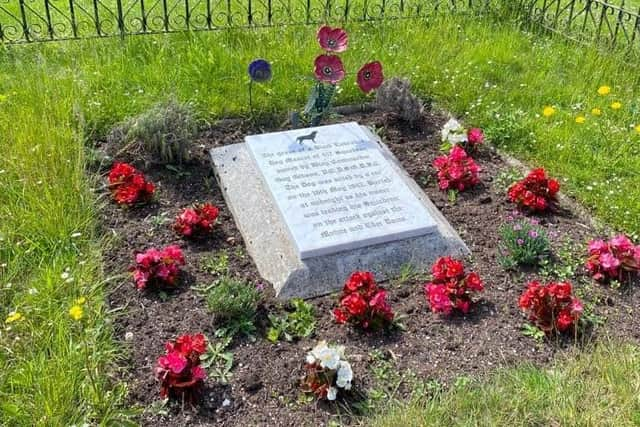Memorial to Guy Gibson's dog to remain at RAF Scampton
and live on Freeview channel 276
After an extensive planning process, West Lindsey Council has made the decision to keep the memorial dedicated to Guy Gibson’s dog at RAF Scampton.
In one of the most controversial planning application debates of recent years, members of the council’s planning committee firmly believed relocating the grave of the black Labrador would lessen the historical significance tied to the former Dambusters base.
As a result, they unanimously rejected the RAF’s proposal.


Advertisement
Advertisement
The committee meeting, held at Lincolnshire Showground, featured a range of speakers, including Sir Edward Leigh, Conservative MP for Gainsborough, and far right activist Alek Yebury, who all voiced their strong opposition to the plans.
Sir Edward told the meeting: “History is vital and this dog’s history is linked inexplicably to this base. We are saying not over our dead body, we want a future for this site and we will fight for it.
In May, the RAF proposed relocating the grave to RAF Marham in Norfolk, citing concerns it may be at risk due to the government’s plans to house up to 2,000 asylum seekers at the former home of the Dambusters.
In its application, the force stated concerns about preserving the dog’s place of rest following uncertainty surrounding the housing of asylum seekers at RAF Scampton.
Advertisement
Advertisement
The council has continuously fought the asylum-seeker plans as they have disrupted a £300 million heritage, enterprise and tourism project from Scampton Holdings.
This ambitious undertaking had promised to generate thousands of highly-skilled jobs, but there are now doubts as to whether it will happen at all.
The council’s case will reach a critical juncture next week when it is presented to the High Court on July 12 and 13.
At this stage, a decision will be made on whether to proceed with a full judicial review to assess the legality of the Home Office’s proposed plans.
Should the legal challenge fail, the first wave of about 200 men, predominantly from Afghanistan, Iraq, and Iran, is expected to arrive in mid-August.